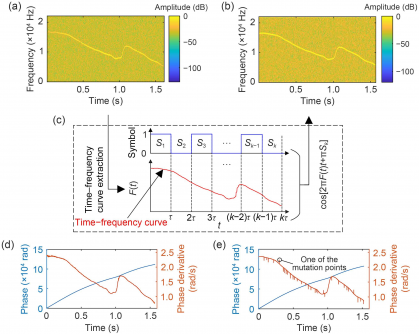BREAKING NEWS: Researchers at Tianjin University have unveiled a groundbreaking method for recognizing underwater communication signals that mimic dolphin whistles, achieving an impressive 90% recognition accuracy under challenging conditions. This urgent development, announced earlier today, has significant implications for maritime military operations and covert communications.
The innovative technique, which utilizes a convolutional neural network (CNN), aims to overcome the limitations of traditional underwater signal recognition methods. These conventional methods often struggle with signals designed to evade detection, particularly those that resemble natural marine sounds. The team’s research reveals that existing systems have misclassified such signals as background noise, leading to potential vulnerabilities in military applications.
To address these challenges, the researchers from Tianjin University’s State Key Lab of Precision Measuring Technology and Instruments and the Shenyang Institute of Automation proposed a three-step recognition process:
1. **Spatial Diversity Combining (SDC)**: This first step enhances the main signal by combining inputs from multiple hydrophones, countering the effects of multipath propagation which can distort underwater communication.
2. **Time-Frequency Spectrum (TFS) Mask Filtering**: This method filters out noise from the surrounding environment. By transforming the TFS into a 2D image, the team applies advanced techniques to extract meaningful whistle signals, providing a clearer picture for subsequent analysis.
3. **Phase Derivative Spectrum and CNN Recognition**: Using the Hilbert transform, the extracted signals are analyzed for phase variations, which are then processed through the CNN. This approach is particularly effective, as it identifies key mutation points that differentiate the communication signals from natural dolphin whistles.
In extensive simulations, the method demonstrated a recognition accuracy of 90% at a signal-to-noise ratio of 0 dB, showcasing its robustness even in noisy conditions. Field tests conducted at Qingnian Lake in Tianjin, covering a distance of 150 m with an SNR of 6.36 dB, yielded an accuracy of 81%. This promising outcome indicates that the new technique could redefine underwater communication protocols.
The implications of this research extend beyond military applications. Effective underwater communication is crucial for environmental monitoring and marine biology research, making this breakthrough a potential game-changer across various fields.
The study, titled “Recognition method for underwater communication signals that mimic dolphin whistles using phase-shifting modulation,” is co-authored by Qingwang YAO, Jiajia JIANG, Xiaolong YU, and others.
This urgent update highlights the ongoing advancements in underwater communication technology and its potential to enhance operational capabilities in aquatic environments. As further research unfolds, the global implications of this work will be closely monitored.
For more details, read the full paper here: Recognition method for underwater communication signals.







